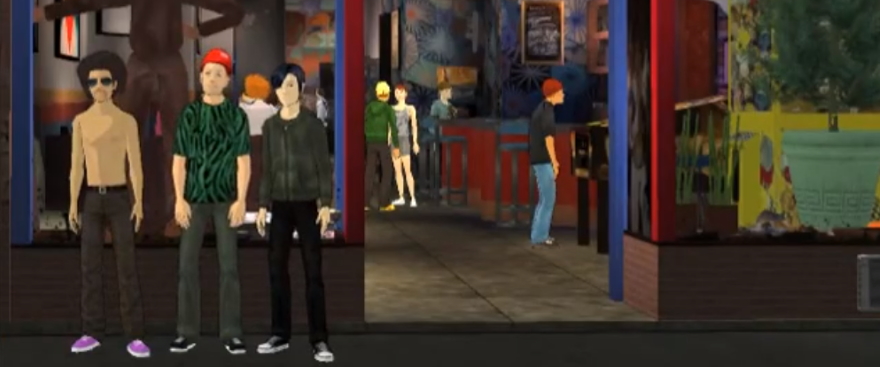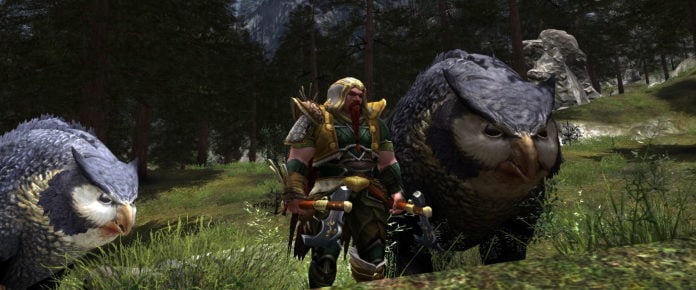
For the music trendy in the ’80s and ’90s, MTV was a huge source of fascination and audio discovery. It was the edgy channel that you turned on to watch the latest — or classic — music videos hosted by “VJs.” As we well know, by the mid-1990s, MTV’s focus shifted away from actually showing music to becoming a nonstop barrage of reality shows, cartoons, and pretty much anything that corporate suits thought would hook their intended demographic.
I’ll be honest: I was never MTV’s demographic even when I was its demographic, and I really haven’t thought about this channel since 1999 or so. That’s probably why I missed when the channel decided to make an MMO of its own — or, more accurately, a virtual world that promised hot and trendy settings, fashion, and parties.
Today, let’s take a look at that time when MTV went out on a limb to make a virtual world. What was it, exactly, and what became of it?
Knowing that gaming and social media was a huge part of the up-and-coming generations of potential viewers, MTV decided to make a bid for those audiences’ attention by dipping into the MMO market to meet both of these desires. The channel had been experimenting with this with no less than four titles over the 2000s, such as 2006’s Virtual Laguna Beach and Nicktropolis.
Finally, it was time to tackle a far more ambitious project that wouldn’t be tied to any particular show. The next year in 2007, the channel announced Virtual Lower East Side, or vLES, for short. That’s an unfortunate acronym, isn’t it? Sounds like “fleas” in my head, at least.
So what was vLES? Created by studio Doppleganger for MTV and using the studio’s tech for The Lounge (another virtual hangout), the idea was to make a virtual recreation of the super-trendy Lower East Side of New York City where cel-shaded avatars could mingle, play dress-up, and attend raves and concerts across its six city blocks. Virtual hosts who had experience in the actual Lower East Side were on hand to add authenticity and flavor. But the big twist was that MTV encouraged music artists across the entire popularity spectrum to apply for in-game performances in a bid to get noticed.
As the New York Times put it, the result was a bizarre mash-up of Facebook, MySpace, and Grand Theft Auto. It was hard not to compare vLES to Second Life as well, as the latter was well-known for staging in-game events and musical performances. Yet MTV hoped that by giving it a darker vibe (the logo for the game was a giant shaved rat because of course it was), vLES would appeal to an eager audience.
The goal, according to branding firm Crux, was to “create a new kind of social network for the MTV audience, bringing indie music to life in the virtual world with a web experience that is highly visual, totally original, and engaging enough to capture the attention of a sophisticated digital entertainment consumer.”
“It was a way for us to get back to our core virtues around music discovery and passion for new, underground subversive bands,” said MTV Network Music Group President Van Toffler.
Music was arguably the main focus of the virtual world, above even mingling with other players. The game would stream tunes at you any time you weren’t actually at one of the rooms where a music video would be splashed up on a stage. Basically, you’d be going into an MMO to watch YouTube, which makes as much sense as it sounds. It was far better when bands would actually show up, so to speak, to put on a virtual performance for adoring and interested crowds.
Apart from actively chatting and passively viewing, the user’s other main activity was to rate bands’ performances. Theoretically, MTV was going to use these ratings to increase recognition and promotion for indie and up-and-coming artists.
To be fair, it’s not the worst idea that’s ever been fielded by a soulless corporation. The problem is that vLES didn’t gain much traction and hype in the exact way that it needed to. The virtual world was, as site Bowery Boogie describes it, “always dark […] more of a nightlife-driven utopia (dystopia?)” and had a map that didn’t accurately represent the actual Lower East Side of Manhattan.
Depending on your perspective, this might have been exactly the sort of cutting-edge move that MTV needed to make with the shift of technology and rise of social media. Of course, depending on your perspective, this might have been as deftly handled as sending Steve Buscemi in to infiltrate a high school.
“[vLES] might also be the most innovative and blatantly cynical project the channel has hatched in a long time: an unambiguous attempt to leverage the cultural cachet of the Lower East Side to bring new consumers and curiosity seekers into MTV’s sphere of influence,” wrote one New York Times reporter in 2008.
And the actual denizens and club owners of the Lower East Side at the time weren’t too pleased at MTV for encroaching on what they felt was “their” territory.
The initial rollout of vLES was a reported flop and mostly deserted, offering very little value to users that they weren’t getting elsewhere. MTV then turned to Vice and its advertising agency to spruce vLES up. Throughout 2008, the game did draw in more users and even staged some major events. Unfortunately for MTV, it wasn’t quite as hot as it wanted, and so the project was quietly shuttered soon thereafter.
 Believe it or not, MMOs did exist prior to World of Warcraft! Every two weeks, The Game Archaeologist looks back at classic online games and their history to learn a thing or two about where the industry came from… and where it might be heading.
Believe it or not, MMOs did exist prior to World of Warcraft! Every two weeks, The Game Archaeologist looks back at classic online games and their history to learn a thing or two about where the industry came from… and where it might be heading.
















